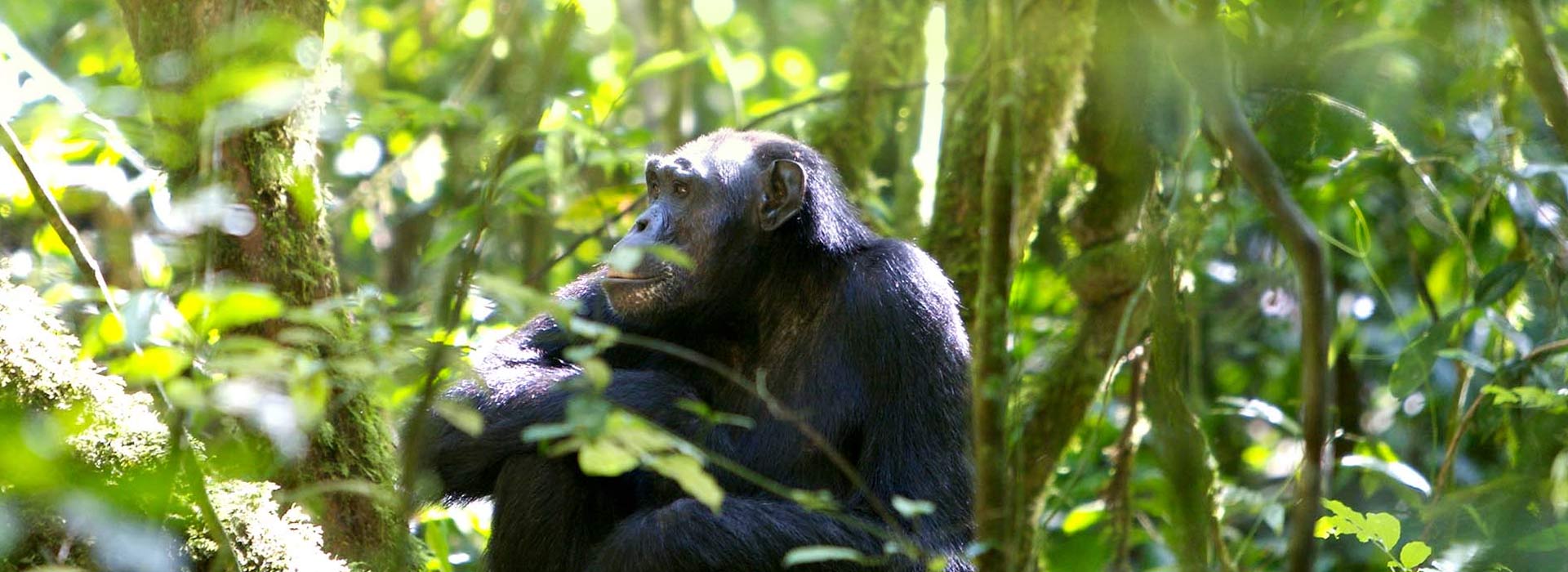
Chimpanzee Trekking in Tanzania are conducted in three national parks: Gombe Stream National Park and Mahale Mountain National Park on the eastern shore of Lake Tanganyika, and Rubondo Island National Park in the south – west of Lake Victoria. The National Parks of Gombe and Mahale lie on the eastern side of Lake Tanganyika. Kigoma is the main town on the Tanzanian side of the lake. Gombe is about 20 kms from Kigoma. Mahale N. Park lies about 150 kms south of Kigoma. These Three National Parks are Good for Chimpanzee Trekking!
It is 52 sq. kms park of altitude varying from 770 to 1,500 meters above sea level. Gombe National Park is associated with Jane Goodall who started her research on chimpanzees in 1960. It is more accessible than Mahale Park and has approximately 100 chimpanzees. Chimp tracking involves a fair amount of time and effort and is best shortly after sunrise; in the latter part of the dry season – July to October – they take less than an hour to locate (more during the wet season). Gombe also has other primate species, including the olive baboon, the common vervet, the red colobus, the red-tailed colobus, and the blue monkey. Chimp tracking must be done with a guide. There are no restrictions on walks along the beach or on swimming in the crystal clear waters of the lake. Over 200 species of birds recorded.
It is a 1,613 sq. kms park in Lake Tanganyika (Highly Recommended!). Mahale National Park is not as well – known as Gombe N. Park. It is more remote and much larger. It has from 700 to 1000 chimpanzees. Research by Japanese scientists has been going on since 1965. Mahale is not just a large scale version of Gombe. It is one of the most beautiful parks in Africa: mountains, lush forests and deserted sandy beaches. It is magical. Chimpanzee tracking may involve more walking than at Gombe. Seeing chimps is almost guaranteed on a three day visit.
Rubondo National Park. 475 sq. kms. Highly Recommended! Minimum stay three days, preferably four days. Rubondo National Park is for the discriminating. It has few visitors. Flights are available from Mwanza and Serengeti. The entire island is a national park, being about 25 kms long by 8 kms wide. Some of the animals were introduced to the island in the 1970’s by Frankfurt Zoological Society. The descendants of these animals now live in natural conditions. Apart from chimpanzees, Rubondo has elephants, hippos, sitatunga, giraffe, and colobus. Over 600 fish eagles (H.vocifer) are resident. The call of the fish eagle is perhaps what one most closely identifies with the African wilderness. Rubondo has a wonderful climate, forest-fringed beaches and unusual wildlife viewing. Birding is excellent. Chimpanzees were introduced onto the island in the 1970’s. It takes about six hours to locate them with a 50% chance of success. Optional activities include boat trips (crocodiles and hippos often seen). The sitatunga antelope is common on the island.